The plasma physics drama (Outlook from Moscow)
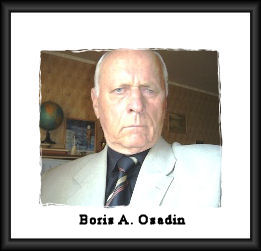
Article by Boris A. Osadin
Moscow State Institute
for Radio-engineering, Electronics and Automatics
(Technical University)
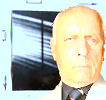 Moscow plasma physicist, Boris A. Osadin comes in from the cold winter with a fascinating account of the political history of trends in plasma physics theory, experiment and finance in Russia during the Cold War and today. This is an account of exotic Soviet scientific personalities and rival theoretical schools, as well as the broader associated military and international politics and the tolls on science of an 'atomic Gulag'. It is also a tale of how the financing of the ITER project today may be an outcome of the ways in which US, European and Soviet scientists exploited the crazy Cold War politics to the benefit of their research preferences and to survive.
Moscow plasma physicist, Boris A. Osadin comes in from the cold winter with a fascinating account of the political history of trends in plasma physics theory, experiment and finance in Russia during the Cold War and today. This is an account of exotic Soviet scientific personalities and rival theoretical schools, as well as the broader associated military and international politics and the tolls on science of an 'atomic Gulag'. It is also a tale of how the financing of the ITER project today may be an outcome of the ways in which US, European and Soviet scientists exploited the crazy Cold War politics to the benefit of their research preferences and to survive.
Historic Conflict
In Physical kinetics and the drama of human destiny, Alekseev writes of a history of conflict between professor A.A. Vlasov, the creator of kinetic theory of plasma as a special substance, and a group of theorists headed by Academician* L.D. Landau, who considered plasma as just ionized gas. [1] This conflict started after the Second World War and continued during the Cold War, which influenced its outcome. Long-lasting consequences of Landau’s [official] “victory” over Vlasov in the scientific debate are considered below.
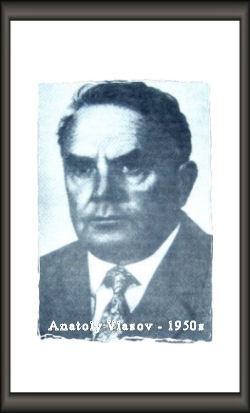
Three reviews
The victory was in dispute right from the start. Soviet physicists not aligned with the USSR Academy of Sciences (AS), did not recognize it. After Landau’s death (1968) the Physics faculty of Moscow State University (MSU) nominated professor Vlasov to the Lenin Prize. The Lenin Prize and State Premium Committee sought peer reviews by Academicians Sagdeev and Zavoisky and member-correspondent Kadomszev. The texts of all three reviews can be found in Russian archives, and nowadays present great interest. They are of interest because they demonstrate, not only the contemporary political interest in this specific field of physics, but also the level of understanding of Vlasov’s main idea, which consisted in recognizing the ability of plasma to organize itself. [26]
Sagdeev’s review was negative. He wrote that Vlasov “had overlooked the phenomenon of Landau’s extinguishing” (also called “Landau damping”) of longitudinal plasma waves. Sagdeev described the frequent mention of Vlasov’s name in physics literature as “of more significance than his input into science.” Kadomszev’s conclusion was kinder. Pointing to the mathematical error, which already had been noted by Landau, he wrote: “In my opinion A.A. Vlasov is worthy of Lenin’s prize but not for “the series of publications on plasma theory”, notably “the kinetic equation with self-organised [self-coordinated] field”. Only Zavoisky’s conclusion was completely positive: “Vlasov’s works should rank internationally with key scientific research and are worthy of Lenin’s prize, without doubt.” Because of that review, Vlasov won the prize in 1970.
Was he satisfied?
When one of his former post-graduates called him to congratulate him for his success, he exclaimed “Too late!” and ended the phone conversation.
In the early 1960’s as a graduate from the Physics faculty of MSU, under the guidance of Academician A.G. Iosifian in the Istra branch of the All-Union Institute for Electro-mechanics (near Moscow), I began experimental studies in impulse plasma accelerators. I quickly became uneasy about a number of observations. Looking for help on theory I connected with Dr. Sagdeev. The talk took place at Sagdeev’s apartment in the kitchen and was positive for both of us, but very soon I was persuaded that Sagdeev’s theoretical physics were a long way off testing. That’s why later I didn’t seek him out at meetings. As for Sagdeev, he very soon found himself in Novosibirsk, where he became a member of the USSR AS Space Exploration. Again in Moscow, he became director of the USSR AS Space Exploration Institute. After that he married the grand daughter of the former USA president Eisenhower and left the USSR for the USA.
The last time I saw Academician Kadomszev was 1997 at a sitting of the Scientific-Technical Council of the Russian Ministry for Atomic Energy, which was devoted to ITER (the International Thermonuclear Experimental Reactor). Kadomszev was the main speaker there. After his report he was asked for his opinion on the accuracy of the ITER Project calculations. Kadomszev estimated this accuracy as plus-or-minus 30%: if plus, everything will be OK. If minus, nothing will be. Soon after that sitting Kadomszev died.
I never met Academician Zavoisky and never followed his publications very closely. It seemed to me that Zavoisky’s plasma and my plasma were two very different plasmas. Only after Zavoisky’s death did I realize my mistake.
A letter to Stalin and other plasma physics
In 2009 physicists could say that 80 years had gone by since the term “plasma” first made its appearance, with its introduction into physics by the Americans Langmuir and Tonks, and that 60 years had passed since the young Soviet Sergeant Lavrentiev had sent his letter to Generalissimo Stalin.
The letter was devoted to the possibility of creating a man-made Sun on the Earth in the form of the controlled thermonuclear reactor. This idea had occurred to the sergeant’s mind after testing the first atomic bomb in the USSR, at the peak of the Soviet atomic project’s development. For the same reason Beria, the administrator of this project, sent the sergeant’s letter to theoretical physicist Sakharov. Thus the theory of magnetic thermonuclear reactor by I.E. Tamm and A.D. Sakharov [2] appeared. This theory was based on the hypothetical possibility of a man-made plasma torus, hanging in magnetic field that had no contact with the vacuum chamber walls. Some years later this supposition was transformed into the “tokamak” [reactor].
In the beginning of 1951, under Kurchatov’s guidance, a series of seminars on plasma physics and the controlled thermonuclear reactor idea took place. A number of famous Soviet physicists, including Landau, Tamm and Sakharov, participated in these seminars, but Vlasov did not. The most active participant was Arszimovich, who was not then an academician. He offered, not only to heat, but also to hold plasma by a strong electric current. (That is he proposed to use Joule’s Heat for plasma heating and Ampere’s Force for plasma holding.) Very soon he had demonstrated his idea by means of so called z-pinches. In these he discovered neutrons, testifying to nuclear fusion reactions, and won the Lenin Prize (together with co-workers). He then headed the plasma department of the Institute for Atomic Energy (IAE), teaching students that plasma may be controlled by Ampere’s force (known since 1820 and working in all electric machines) and thus transforming himself in the USSR into the absolute plasma physics leader.
Everything seemed OK in 1951. But in 1961, when Arszimovich tried to summarize experimental results [3], he was disappointed.
About tokamaks, for example, he wrote the following:
“The bright transverse flashes, following one after another, occupied the entire volume of the vacuum chamber…There is no skin-effect… The gas pressure in plasma is very small, and its meaning is insignificant…The kinetic energies of ions are far greater than the average energy of electrons… The distribution function doesn’t correspond to the idea of Maxwellian distribution of velocities… The density distribution through the cross-section of plasma torus isn’t clear. Its change in time isn’t clear either… Over 90% of energy inputs to plasma go to compensate for the huge energy losses of plasma. There is no convincing explanation for these losses… Magnetic thermo-isolation in the system under consideration is practically absent… There is relatively large number of ions with energies from 1keV up to tens of kilo-electron-volt, that testify to the strong deviation of energy distribution from Maxwellian one. Fast ions obtain their energy in accelerating processes… The plasma is found in condition of continuous macroscopic but extremely chaotic motion… In inertia processes ions are accelerated by electric fields, which bind them to electrons. However almost nothing has been achieved to understand these processes… If we consider the experimental results from the point of view of their capacity to offer solutions to the controlled thermonuclear fusion problem, then the outlook is pessimistic…All oscillogrammes of the current derivative show highly intensive oscillations, the chaotic character of which clearly indicates the development of some non-stable plasma processes. The intensity of oscillations very strongly changes during every discharge impulse… The high amplitude of high-frequency oscillations indicates that even a very strong outer magnetic field isn’t the ideal method for guaranteeing the whole stability of the plasma torus… The maximum plasma density is many times less than the value that is required, if all the particles initially in the vacuum chamber are to become plasma… To understand the nature of plasma phenomena, at least qualitatively, requires very intensive flow of new and reliable experimental information… Whether we will achieve what we set out to do remains the open question.”
This merciless self-criticism is to be found in Arszimovich’s Controlled thermonuclear reactions [3].
However a decade ago ([4] 1950) Vlasov had warned that plasma isn’t gas or metal but “an absolutely original substance binding long-distance forces”. What about remembering Vlasov’s work and restarting the development of the kinetic theory of plasma together with appropriate experiments? Instead of this, Arszimovich began a war against another famous physicist, who worked at the same IAE and in the same scientific field but disagreed with Arszimovich’s plasma-dynamic beliefs. The other physicist was Academician Zavoisky.
Let’s note here, that the atomic science race between USA and Russia meant that the scientists were literally forced to work at a "GULAG"** pace which made many of them psychologically ill.
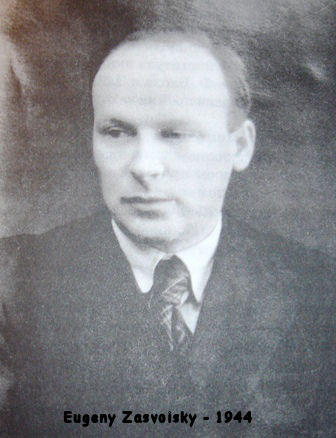
Zavoisky’s fate was determined by the discovery of EPR (electronic paramagnetic resonance), which happened in 1944 at Kazan University. This University is one of the oldest in Russia and connected with the name of a famous mathematician, Lobachevsky. During the Second World War Kazan became the shelter for Soviet science. Evacuees from the Leningrad Institute for Technical Physics and the Moscow Physics Institute (both belonged to the USSR AS) were working there, including Academician Kurchatov and other well-known Soviet scientists. These circumstances meant that Zavoisky would receive special attention.
There are books available about Zavoisky prior to his work with plasma [5], [6]. Zavoisky began working on plasma physics when he was over fifty and already a highly experienced scientist, as his plasma publications attest. [7]
Landau’s extinguishing
Sagdeev wrote that Vlasov had overlooked “Landau’s extinguishing”. But what is Landau’s extinguishing? It came to light in 1946 through Vlasov’s kinetic equation for electron component of infinite plasma with homogenous ion density and the Maxwellian distribution function of electrons, which started out by deviating slightly from equilibrium [8]. This task was formulated by Vlasov in 1938 as a specific example to demonstrate his approach to plasma, and, at the time, he believed it was conclusive. However his conclusion was not entirely correct from a mathematical point of view. Academician Landau corrected Vlasov’s conclusion - (Thanks Landau!) – and proved that a small deviation is extinguished with time.
But why would anyone be surprised by this?
It’s clear to everybody that man-made (laboratory) plasma cannot be infinite, and therefore that limited plasma cannot be Maxwellian. So Landau’s extinguishing is just the “on-paper effect”. And Zavoisky could not help but understand it. He also realized that Landau was not working in plasma physics before and after his conflict with Vlasov, despite the fact that Landau was an extremely gifted and adaptable physicist. Furthermore Zavoisky realized that Tamm and Sakharov had not studied high temperature plasma either before or after working on the magnetic thermonuclear reactor theory under Beria’s direction, following on from Lavrentiev’s letter to Stalin (see above).
This was why the only person that Zavoisky could consult with on theory was Vlasov.
Working with real plasma
But what was the main question for those experimenting with real plasma?
From the time of Langmuir and Tonks, scientists working with real plasma had been trying to understand the transformation of energy obtained by plasma in the outer electric field. Of course, at the end all energy radiates or transmits to the vacuum chamber walls. But what are the steps of its in-plasma dissipation? The scientists were not interested in the extinguishing or non- extinguishing of small deviations from thermodynamic equilibrium, but in the self-organised electron distribution function and determined by it the inner electric field, and also in the pattern of oscillations, which absorbed the energy input to the plasma. Vlasov’s kinetics came out of the investigation of this question. [9] And one of the most interesting applied questions of plasma kinetics is a question concerning the ability of plasma to heat itself up to high temperatures by oscillations of different kinds (by turbulence). For many years, Zavoisky and his co-workers concentrated most of their experimental research on turbulent heating.
Already the first tests, made on special equipment, (1962) showed, that:
“Where there is high enough tension in an alternative electromagnetic field anomalous energy absorption occurs at a speed greater than the speed of dissipation from collisions.”
Using equipment built in 1965, with oscillating power up to 1 Gigawatt (GW), the experimenters were able to transfer about 30 per cent of that power to the plasma. Simultaneously it was found that the newly discovered effect did not actually depend on the value of the magnetic field. In addition, via what is called Shtark’s widening of hydrogen spectral lines, strong inner-plasma electric fields (about 27 kilovolts per centimeter) were recorded.
In a report prepared for an international conference (1971), Zavoisky and his co-workers had the courage to state, that:
“The specific resistance of plasma is determined by small-scale turbulence”.
They also expressed confidence in:
“the possibility of heating plasma up to temperatures of 1-10 keV by means of instabilities of Debuy’s Dimension and in less time than one Kulon’s collision”.
[“Debuy’s Dimension” is the distance separating positive and negative particles in plasma. “Kulon’s collision” is incorrectly used here in plasma physics, because it is derived from gaseous kinetics – B.O.]
Academician Arszimovich understood that another kind of plasma physics was unfolding before his eyes and that it would not be easy for him to find a place in this new physics. At first Zavoisky was harassed by abusive comments at physics seminars and conferences, then by commissions checking-up on his experimental results. Subsequently he was pushed aside from continuing his experiments and lost his co-workers. When Zavoisky – a Member of the USSR AS, a Lenin prize-winner, and a Socialist Workers Hero, was finally deprived of the right to take part in international science forums, he left the IAE – in an act that was exceptional in the history of Soviet science, only comparable with Academician Sakharov’s action.
Zavoisky died in 1976 and his funeral service took place not at the IAE, which was named after I.V. Kurchatov, but at the Lebedev’s Physics Institute, where many years ago he had brilliantly defended his doctoral work before the Science Council with the President of USSR AS, Academician Vavilov as the chairman.
Incompatible with the Law of Impulse Conservation
If a mobile metallic sample is placed between parallel conductors (rails) and the rails are connected with an electric current source (for example a charged capacity), the sample (crosspiece) will be accelerating along the rails under the influence of Ampere’s force. Any school student with an interest in physics can calculate the motion of such an accelerator (a linear electric motor). The school student could also explain that the reaction causing the crosspiece to accelerate via a magnetic field comes to the conductors with electric current (the rails). So, if plasma was just a light (gaseous) metal-like conductor, as Arszimovich supposed, why not accelerate a plasma sample (crosspiece) in the same manner?
Nothing showed the inadequacy of Arszimovich and his co-workers’ plasma-dynamics beliefs so graphically as the “Impulse Plasma Accelerators” (IPA). Since the first of Arszimovich’s IPA-devoted publications appeared in the same year that the USSR launched the first Earth-orbiting sputnik, his mistake has a multiplying effect. At the end of the 1950s a number of Soviet research institutes and universities began to study IPA, which they believed showed promise as electro-reactive engines for future space vehicles.
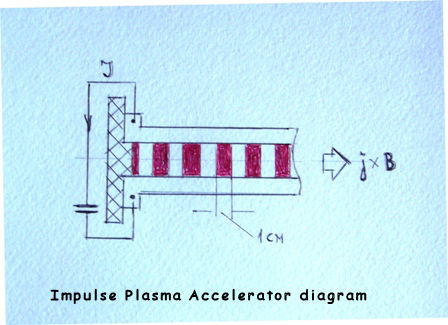
In 1961 a colleague, Tainov, and I collected an IPA, calculated according to Arszimovich et al’s Electro-dynamic acceleration of plasma samples [10]. The rails faced 50 cm long coaxial electrodes. Our plasma had been produced by evaporation of the isolator dividing electrodes. To measure the plasma impulse a ball-pendulum was used. Of course the parameters of the pendulum were calculated to meet the impulse of the value corresponding to Arszimovich et al’s article. After the first discharge of current from the appropriate capacity battery, however, the pendulum failed to move. We began to shorten the rails. Step by step we got to zero. Our IPA did not need any rails! We obtained maximum impulse in their absence. The plasma was accelerating all by itself, without any help from the rails or from Ampere’s force. This is why Academician Iosifian made us take out a patent for our plasma gun [11]. After acquiring SPR (super-speedy photo-registrar with space permission 0.1 mm and time permission 10 ns) we forgot about electro-dynamic acceleration of plasma.
Nowadays it’s possible to state that Spontaneous Generation of High-velocity Plasma Samples (SGHPS) was the most notable discovery in plasma physics of the second half of last century. The first striped SPR-pictures, testifying to the interrupting generation of plasma layers with a frequency of 1-4 MHz and with ion energies up to 1-3 keV, were published by Sukhumi physicists [12]. Nonetheless, working with gaseous filling of the vacuum chamber and not doing special spectral studies, when they published their article, they had not identified the ion components of their plasma and believed it to be of gaseous origin. Publications [13], [14], [15], [16] proved the erosion origination of plasma samples (layers). They were forming out of the thin vaporous layer near the surfaces of electrodes or the isolator dividing them. Plasma ions were getting their energies inside a thin region (layer) next to the vaporous layer and having a thickness of not more than 0.1 mm. We should also note here the discovery of a powerful braking radiation in the accelerating layer [17], testifying to collective electron oscillations, or, according to Vlasov, vibrations, or, according to Zavoisky, instabilities of Debuy’s dimension.
Let’s look at the fine picture below.
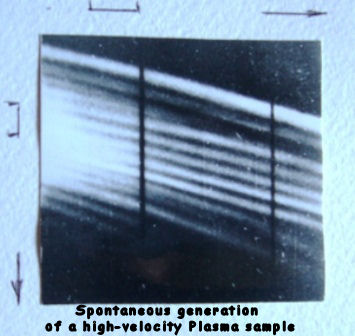
A typical SPR-picture (rotating mirror picture) of SGHPS, SPR slot was oriented normally to a plasma-producing surface [15]
The plasma-producing surface (ordinary glass) is on the left. The plasma layers (ions of silicon and oxygen) are moving (between the rails) to the right. The time axis is directed downwards. The noted scales are equal to 1 cm and 1 microsecond accordingly. A stripe inclination to the time axis (dx/dt) characterizes a momentary velocity of a plasma sample (layer). We can’t see in the picture the region of plasma acceleration (because of Debuy’s dimension’s about one thousandth of millimeter). Everything looks as if plasma is flowing out from the plasma producing surface with its maximum velocity, and is further moving by inertia or even with slight deceleration. At the power supply of 10 MW or more all parameters of SGHPS [the frequency of samples generation (about 3 MHz), their non-homogeneous density, the velocity and energy of the directional motion of ions (about 60 km/s and 0.5 keV), the plasma temperature in moving system of coordinates (about 3 eV at the distances of 1 cm or more from the plasma producing surface) and so on] are settled spontaneously, that is by plasma itself. The fact is striking!
As a result of these experimental observations two questions had arisen, which were completely unresolvable using the framework of magnetic hydro-dynamics (Azszimovich’s beliefs). These were:
1) What is the nature of a strong electric field in the accelerating layer?
2) In what way does the energy, necessary for acceleration of ions, enter this layer?
Both questions lead to Vlasov’s kinetics.
Plasma is a many-faceted substance and not all kinetic effects are easy to interpret. But if we are to form conclusions from the simplest of Vlasov’s tasks, we get the following.
It is better to forget about Maxwellian electron and ion distribution and about plasma temperature as it is usually understood. Such a distribution is incompatible with the electric neutrality of a plasma sample as a whole. Bounded plasma presents itself as a hump of electric potential for ions and a potential pit for oscillating electrons. As for distribution function for electrons, it’s close to Dirak’s function with total electron energy as the argument. The total energies of electrons enclosed in the pit (kinetic plus potential) are equal or less than zero. And if electrons with positive energies (such as electrons called “transitory”) find themselves in the pit, over the period of a single transition through the pit (that is equal to the interval of the plasma oscillations) they lost most of their energy. This energy goes into the swinging of the collective electron oscillations in the pit and in the increasing of the self-organised electric field. That’s why the turbulent plasma has very high electrical resistance. The energy of the inner electric field is spent on the two-sided acceleration of the ions. As a result of it, the initial motionless plasma sample (layer) transforms into two high velocity samples, flying in opposite directions. In such a way the transformation of energy, to the plasma from the outer electric field, finishes - so as after a pause start a new cycle of transformation. It’s very significant, that at such process of energy transformation, a plasma as a whole doesn’t get any impulse.
In the case of relatively homogeneous ion density (in the volume of plasma), the plasma (micro) explosions lead to turbulent heating of the plasma, studied by Zavoisky. When a gradient of ion density is strong enough (near the evaporating wall) SGHPS phenomenon takes place. Both effects are exceptionally important for the real plasma. The turbulent (non-Maxwellian) heating increases a flow of particles (and accordingly flows of mass, impulse and energy) to a vacuum chamber wall. On the contrary SGHPS, though not without energy losses, throws back these flows from the wall. The plasma-wall touch is inevitable. Bu it is not so simple, as it had been imagined by pioneers of controlled fusion. First of all the contact of a hot plasma with a cold material (solid) wall realizes through a thin but dense vapor (or gaseous) layer. Secondly it can’t be stationary, only interrupting (see picture above). Thirdly and mainly: since 1950s till nowadays it remains terra incognita of plasma physics.
Reaction of plasma during SGHPS is not observed via the contour with the electric current, but via the surface directly producing plasma. This may well sum up the misunderstanding of Arszimovich and his advocates. It also means that plasma isn’t continuous but a self-dividing substance. Electro-technical and magneto-hydro-dynamic terms can’t be applied to it.
The physical interpretation of SGHPS, based on Vlasov’s kinetics, was first discussed in 1977 [18]. At that time Vlasov and Zavoisky in the USSR were almost forgotten, while the primitive Arszimovich’s beliefs had become official dogma, which was included in the educational text-books and Encyclopedic Editions. That is why the “experiment for Arszimovich’s supporters” was absolutely necessary. Its idea was extremely simple. While Ampere’s force, like any other vector, has predetermined direction, the kinetic plasma explosion creates equal impulse flows in both the direction of Ampere’s force and the opposite direction. Magnetic field is certainly present in such processes, but, at the level of magnitude of Debuy’s dimension, it doesn’t influence plasma acceleration.
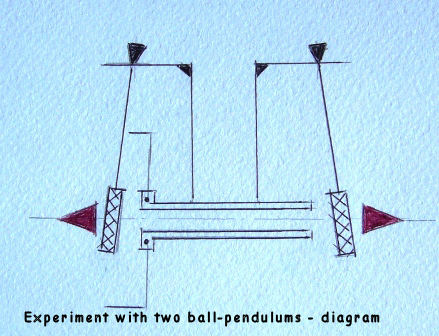
Such an effect had been demonstrated by means of special equipment (with two ball-pendulums) assembled towards the end of the 1970s in the Istra branch of the All-Union Institute for Electro-mechanics [19]. The beliefs of Academician Arszimovich and his advocates in electro-dynamic acceleration of high-current plasma turned to be incompatible with one of fundamental physical laws – the law of impulse conservation.
At the Second International Symposium on Solar Space Satellites, in Paris, I spoke about plasma acceleration by means of a self-organised (Vlasov’s) electric field in 1991 [20]. By chance my talk was in an auditorium named after Ampere. If this great physicist had been working not with metallic conductors, but with the high-current plasma samples he would not have discovered the force which now carries his name. Instead he might have discovered, firstly, turbulent electric fields stronger than Ampere’s force and, secondly, instabilities with dimensions characteristic of Debuy’s, or much stronger fields of electric layers, periodically arising and disappearing near a plasma producing wall and throwing plasma from the wall (see the picture above).
Plasma physics as a victim of the Cold War or A torus with a hundred holes
Now many people think that Soviet science exploded at the same time as the 4th block of the Chernobyl atomic plant. But there are more reasons to say it ended quietly in the middle of 1970s.
In 1975 M.V. Keldysh left the position of president of USSR AS. He was the last of “Three Great Ks” (Kurchatov, Korolev, Keldysh), that personified the historical phenomenon called “Soviet science”. Vlasov died in the same year, Arszimovich two years earlier, Zavoisky a year later. Keldysh was replaced by the 72 years old Academician and IEA director, A.P. Aleksandrov, a very experienced organizer but indifferent of basic science. Immediately his co-workers, Academicians E.P. Velikhov and B.B. Kadomszev , published in Pravda the article [21], in which you may read these words:
“Tokamak-10” – the last step to testing the reactor... Controlled thermonuclear fusion research is entering a new phase… we can solve this problem within the next five or six years… At the end of this century it will be possible to plan the beginning of thermonuclear power engineering, to determine its place and role in the energy balance of the USSR. On the threshold of XXV Congress of the Communist Party of the Soviet Union, scientists from the I.V. Kurchatov Institute will work with great creative enthusiasm…”
In the same year (1975) at the Poly-technical museum in Moscow, the painted plaster cast of “Tokamak-10” was exhibited as Communist Party’s program (nowadays on exhibition). Kinetic plasma physics which had been began by Vlasov and continued by Zavoisky had been cast out. A lot of experienced plasma physicists were forced to leave plasma physics. The fundamental plasma experiments were replaced by the total tokamak-building. Independent and different Soviet plasma scientists were overcome by the pseudo-scientific bureaucratic monster.
These events may be considered to mark a critical point, after which empty promises became routine in Soviet science, and led to the Chernobyl disaster and other unpleasant things. The historical roots of this point, however, must be sought in the Cold War.
During that war, if the Americans made the neutron bomb, the Soviets (Russians) had to make one too. If the Russians built a new tokamak, the Americans had to build a bigger one of their own. It was inappropriate to ask the question “what for?” during the Cold War. And it’s important to note that some Russian and some American (Western) scientists liked this practice very much. Already in Khruschev’s time the rivalry between Soviet and American scientists was more like secret cooperation. Later on the cooperation became almost open. Frightening the governments of their countries with imaginary scientific and technical achievements by their imaginary enemies guaranteed those scientists privileged financing of their studies and projects. Collapse of the Soviet Union threatened to put an end to such practices. Former “enemies” then became allies through international projects and international organizations were created to realize projects.
Nowadays the so-called International Thermonuclear Community (ITC), the global plasma monopolist, is promising mankind thermonuclear paradise after 2030. So the 5-6 years timeline for Academicians Velikhov and Kadomszev’s promise given in 1975, has been drawn out for over half a century. Recently Academician E.P. Krugliakov, not without pride, wrote to me that during the last decades in different countries of the world about 100 tokamaks have been built. Refuting Krugliakov, site www.iter.org named more than 200 tokamaks. But whether the real number is 100 or 200, mankind has got nothing from any of these tokamaks.
How come torus-holes can be sold to mankind for so long and so successfully?
They can be sold because of pseudo-scientific mythology.
Myth No.1: The quick exhaustion of hydrocarbons, after which mankind will experience energy collapse. Such a prediction was made many years ago, but oil-pipe lines and gas-pipe lines continue to be built. Nevertheless some day won’t hydrocarbons exhausted? Yes, of course. But that doesn’t mean that we need to build tokamaks. There are other sources of energy on Earth, of which the foremost is the Sun, a natural thermonuclear reactor, of incomparable bounty.
Myth No.2:
While malicious people were memorializing Vlasov, Landau, Arszimovich, Zavoisky and the IPA experiments, we tokamak-builders, had progressed from 10 to the minus 11-th up to 16 MW of thermonuclear neutrons, and now:
“There are no scientific problems here – only engineering ones.” (Academician Velikhov).
Psychologically this myth is exactly calculated to produce an impression on the “man in the street”. But let’s look at the specifics.
It is not always so easy to separate scientific problems from engineering ones. It is quite clear, however, that before speaking about resolving or not resolving problems, you need, at the minimum, to name them. Maybe the ITC members have resolved the General Vlasov’s task (three kinetic equations plus Maxwell’s equations)? Maybe they really know the distribution functions of electrons and ions in the tokamak plasma? Or the self-organised electric field in it? Maybe they have studied instabilities with dimensions characteristic of Debuy’s, or the turbulent heating of plasma, or the kinetics of boundary layers and the real plasma holding mechanism? (See the picture above). As for neutrons: are they really thermonuclear or a result of accelerating processes in plasma? Taking into account the doubts of a “confused Arszimovich” (see above), a great number of such questions could be asked. But the ITC doesn’t know the answer to any of them. And the best demonstration of its lack of knowledge is “about 100” or “over 200” tokamaks. Why not over a thousand?
But maybe tokamak-builders have known how to transform thermonuclear neutrons in useful energy and have calculated the coefficient of efficiency for future thermonuclear electric power-plant? Or have proved its commercial viability? All the answers are negative.
As for the16 MW of thermonuclear neutrons, although this was demonstrated during one or two seconds by the European tokamak JET in 1999 (on the threshold of the next Millennium instead of the next Congress of CPSU), they didn’t resolve any problems – neither scientific nor engineering. Neutrons had demonstrated already by Arszimovich, and by Zavoisky too. But JET gave them a lot more? There was a lot more plasma volume, and the money spent building JET was a lot more too. More money means more neutrons. That’s all.
Myth No.3: ITC is supported by the World Community.
It’s indeed impossible to imagine ITER without support from the former presidents of USSR, USA and France (Gorbachev, Reagan and Chirac). Hundreds of physicists and engineers of different nationalities could hardly have found their jobs and salaries without this support. (And, by the way, it is this support that makes these physicists and engineers keep a vow of silence about the real significance of their work). But the leaders of the countries participating in ITER (even in addition to some physicists and engineers) are not the whole World Community.
The first famous scientist, who called for reexamination of plasma-dynamic beliefs, was the Nobel prize-winner, the Swedish physicist Alfven. In the beginning of 1970’s he called his own plasma-dynamic paradigm, which he had worked out in the middle of the 1940s and which was later assimilated by Arszimovich and many others, “a theory of pseudo-plasma”; that is a theory of a substance which doesn’t exist in Nature [22]. But tokamak-builders had ignored Alfven’s call for the theory to be reexamined.
After the disappearance of the USSR some former employees of the IAE (Kurchatov’s Institute) began to speak up. One of them, Dr S.I. Yakovlenko, in preprint [23] has written:
“Be forewarned of harsh criticism and different accusations from the people in favour of endlessly looking for a black cat in a dark room without switching on the light… What is the basis of the opinion that no obstacles exist to technical success? A mistake in the absence of any moral justification, caused scientists to be divided into “clean” and “not clean” according to their attitude to the tokamak idea. In particular the mistake gave rise to a phenomenon which came to be known in science- folklore by the name of “tokamafia”. This term refers to quite a large number of scientists at different levels, united by their intention to advance tokamaks by any price, but firstly by suppressing other directions in plasma research.”
Such words in 1990’s Russia were perceived by many former Soviet physicists as revolutionary. Simultaneously, however, they provoked the Russian and International tokamafias into global cooperation. And against the wishes of a majority of scientists this cooperation became a reality.
In 2006, answering a question about the prospects for controlled thermonuclear fusion, Academician Yu. A. Trutnev said:
“I’m not working in this field and don’t believe in it. I consider that scientists have carried out all this work in order to satisfy their own curiosity using State money. Researches in the field of thermonuclear fusion nowadays continue, but I don’t believe that such a fusion will become the real source of energy even in the distant future.” [24]
So “malicious persons” now exist even at Russian Academy of Sciences.
European scientists also express anxiety. For example, now on the site of http://candobetter.org it’s possible to read an article of CERN researcher, M. Dittmar, “Fusion illusions – project ITER and tritium supply”. It seems very important that Dr Dittmar showed that no materials or structures exist which would be able to work under real conditions of deuterium and tritium fusion, while self-supporting tritium breeding, which is absolutely necessary for the function of commercial thermonuclear reactors, is impossible in tokamaks. Dittmar’s main conclusion is quite persuasive: taxpayers, politicians and the mass media have to understand that commercial energy production will never be feasible through controlled nuclear fusion, realizing through tokamaks.
Meanwhile the deuterium-tritium fusion reactor as ITER and representing number 101-t or 201-t tokamak, is still being built in France. What might mankind anticipate from the building?
Ten billion Euro will simply evaporate
ITER organization has no reason to like the Internet, but is forced to use it. When this organization was fighting for finance, the www.iter.org site posted materials aimed at demonstrating the super-competence of tokamak-builders in the field of plasma physics. But thanks to letters from “malicious people” this material disappeared.
Nowadays this site advertises itself as an object of future-tourism under the name “ITER-tokamak”. The whole mass is equal to 23 000 tons (three Eifel towers). The entire length of wire for superconducting coils is equal to 150 000 kilometers (more than three circles round the Earth). The volume of vacuum chamber is equal to 1400 cubic meters; the volume of helium cryostat is 8500 cubic meters; the preliminary cost of the project is 10 billion Euros. On the subject of the plasma (which doesn’t currently exist) it is written, that the volume will be equal to 850 cubic meters and the temperature will be 150 million degrees (about 15 keV or ten times more than the temperature in the center of the Sun.) Five years ago on the same site for the same ITER it said 100 million degrees. But in advertising it doesn’t matter. The cherished purpose of the project is to put in plasma 50 MW and take out 500 MW (Q = 10). ITC propagandists have diligently explained to ordinary people that this will be real – that is useful – power.
Most site-visitors, punch-drunk with the information enumerated above, hurriedly close the site and prepare to travel to France to see the world new miracle in person. But in the minds of more suspicious people a question surfaces: “How many megawatts will this super-tokamak require to power itself?” On the page “Power Supply” these same suspicious people find the figure they are interested in, equal to between 110 MW and 620 MW. The second power will be consumed during the 30 seconds, when the plasma is burning and the fusion energy is produced. Here suspicious people begin to see the light, which is, that ITER has promised Q = 10, but in reality Q < 1! [Q is less than 1]. But it all depends on how the suspicious people do the calculations. You can either include the power needed for the vacuum or the cryogenic system in Q or leave them out.
“Let’s drop this Q. Instead of it we can have three Eifel’s towers and more than three circumferences of the Earth!”
But why does www.iter.org say nothing of the 500 MW of thermonuclear fusion power? Who will be their first consumer?
The suspicious people begin to run and jump through the site searching for the name of this happy consumer and continue until they open the page “Cooling water”, where they read:
“ITER will be equipped with a cooling water system to manage the heat generated during the operation of the tokamak… As ITER is a research facility and not a power plant, most of the cooling water will simply evaporate in the cooling towers.”
We can expect nothing from ITER. It’s just the next tokamak, with an energy coefficient equal to zero.
“The science, that would been created in applied purposes exclusively, is impossible. The scientific beliefs are fruitful only in that case when there is an inner connection between them. If to search only those truths, which promise immediate results, the connecting links slip off and the chain comes apart.”
This natural idea belongs to great French scientist, A. Poincare, and was formulated long before the Second World War followed by the Cold War [25]. But during the Cold War in everything concerning science the World became unnatural.
Five years ago my public lectures at Poly-technical museum had the title:
“ITER: Future power-engineering or globalization of misunderstanding?”
In those lectures I had proposed to separate (by a special experiment) for tokamak plasma the holding effect of magnetic field from the holding effect of a vacuum chamber wall. But my person and already long ago is “not clean” for tokamak-builders.
Now I call for international discussion under the title:
“ITER and Anti-ITER: pro and contra.”
It seems to me, that only in this way can world science overturn the heritage of the Cold War and open the way for free development of research, which hold future, although not immediate promise to become very useful for the World Community.
List of literature
1. Alekseev B.V., "Physical kinetics and drama of human destiny", History of science and technology, No. 9, 2008. P. 2-9.
2. Tamm I.E., Sakharov A.D., "The magnetic thermonuclear reactor theory", in Plasma physics and controlled thermonuclear reactions, v. 1. USSR AS, 1958. P. 3-41.
3. Arszimovich L.A., Controlled thermonuclear reactions, Moscow,1961.
4. Vlasov A.A., The theory of many particles, Moscow,1950.
5. Silkin I.I., Eugeny Constantinovich Zavoisky, Documentary chronicle of scientific and educational activity in Kazan University, KSU, 2007.
6. Zavoiskaya N.E., The history of one discovery, Moscow, 2007.
7. Zavoisky E.C., Selected works, EPR and plasma physics, Moscow, 1990.
8. Landau L.D., "About oscillations of electronic plasma", in Collection of works, v. 2. M.,1969. P. 7-25.
9. Vlasov A.A., "The theory of vibration properties of electronic gas and its applications", MSU Scientific notes, Moscow, Issue 75, v.2, 1945.
10. Arszimovich L.A., Lukianov S.Yu., Podgorny I.M., Chuvatin S.A., "Electro-dynamic acceleration of plasma samples", JETPh, 33, 1957, p.3.
11. Osadin B.A., Tainov Yu.F., "Author’s certificate No.25155 with priority from the 3rd of May, 1962", Registered in the State register of the USSR, November the 23rd., 1962.
12. Kvarzhava I.F., Meladze P.D., Suladze K.V., "Tests on electro-dynamic plasma acceleration", , JTPh, 30, 1960, p. 289.
13. Gurov S.V., Jafarov T.A., Malinin A.A., Osadin B.A., Tainov Yu. F., "Processes on electrodes in high-current vacuum discharges", JTPh, 34, 1964, p. 867.
14. Osadin B.A., "About energy distribution in high-current vacuum discharge", JTPh, 35, 1965, p. 1230.
15. Osadin B.A., "To the question of sample production in impulse plasma accelerators", JTPh, 35, 1965, p.1327.
16. Grigoriev V.N., "Candidate dissertation", VEI, Moscow, 1967.
17. Derevschikov V.A., "Spectrums of plasma at different distances from plasma-producing surfaces", JTPh, 40, 1970, p.1564.
18. Osadin B.A., "To the erosion plasma accelerating mechanism", High temperatures thermo-physics, v. 15, No.5, 1977. (Annotations of articles, deposited with VINITI.)
19. Osadin B.A., Avatinian G.A., Ivanov G.V., Stechkin V.I., "Experimental evidence of non-electro-dynamic character of erosion plasma acceleration in impulse plasma accelerators", High temperatures thermo-physics, v. 18, 1980, p.1106.
20. Osadin B.A., "Plasma launchers for SPS", Second International Symposium, SPS 91, Power from space, Paris/Gif-sur-Yevette, 27 to 30 August 1991, p.492.
21. Velikhov E.P., Kadomszev B.B., "A task for the century: Starting the world’s largest experimental installation “Tokamak-10”", Pravda Newspaper, 4 July, 1975.
22. Alfven H., Cosmic and laboratory plasma physics, K. Schindler, Ed. Plenum Publishing Corporation, New York, 1972, p. 1-14.
23. Yakovlenko S.I., "A thermonuclear electric power-plant and questions of energy quality", preprint, Lebedev’s Physical Institute, 1992.
24. Trutnev Yu.A., "Only real cause educates people", MSIREA(TU), Hydrogen education, No. 3, 2006. P.16.
25. A. Poincare, "About Science", Science, Moscow, 1990, p.364.
NOTES from the Editor of Candobetter
*Academician - "Academician" may also be a functional title and denote a full member of the National Academy of Sciences in those countries where the academy has a strong influence on national scientific life, particularly countries that were part of, or influenced by, the Soviet Union. In such countries, "Academician" is used as an honorific title (like "Doctor", "Professor", etc.) when addressing or speaking about someone. Countries where the term Academician is used in this way include China, Armenia, Azerbaijan, Bulgaria, Croatia, Estonia, Georgia, Hungary, Latvia, Lithuania, Moldova, Romania, Russia, Serbia, Slovenia and Ukraine." (From Wikipedia, http://en.wikipedia.org/wiki/Academician)
**GULAG - the author originally wrote of an 'atomic GULAG'. A Gulag or GULAG was a government agency that administered one of several Soviet penal labor camp systems and so this is a term to describe break-back conditions imposed on scientists at the time in order to try to win the atom-bomb race and other technological challenges.
I have added this basic information to the article here as a footnote: 26. “In physics and chemistry, plasma is a gas, in which a certain proportion of the particles are ionized. The presence of a non-negligible number of charge carriers makes the plasma electrically conductive so that it responds strongly to electromagnetic fields. Plasma therefore state of matter.” Source:http://en.wikipedia.org/wiki/Plasma_%28physics%29
“A new computer simulation shows that dust immersed in ionized gas can organize itself into DNA-like double helixes. These dust structures can behave in many respects like living organisms.
The dust helixes can store information: the scaffolding of their “bodies” can have two stable states – with different size diameters. That way, a spiral can contain sets of wide and narrow sections.
It appears that the specific order of these sections can be copied from one dust spiral to another, like a genetic code. The researchers aren’t sure how it happens, but they think each narrow section of spiral creates a permanent vortex of moving dust outside it. So if another spiral drifts alongside it, that vortex pinches the same length into its narrow state.
Scientists probably wouldn’t classify it as “living” – hurricanes are similarly self-organizing systems, but you wouldn’t call them “alive”.
A team of scientists at the Max Planck Institute for Extraterrestrial Physics in Garching, Germany, are now looking for these structures in nature. One possible place to look is in the rings of Saturn; the dust particles would be fine ice grains and the plasma supplied by the solar wind.” Source: http://www.technovelgy.com/ct/Science-Fiction-News.asp?NewsNum=1157

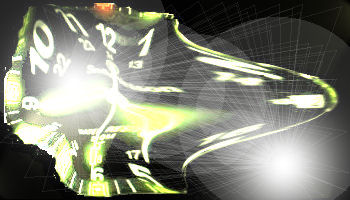
Recent comments